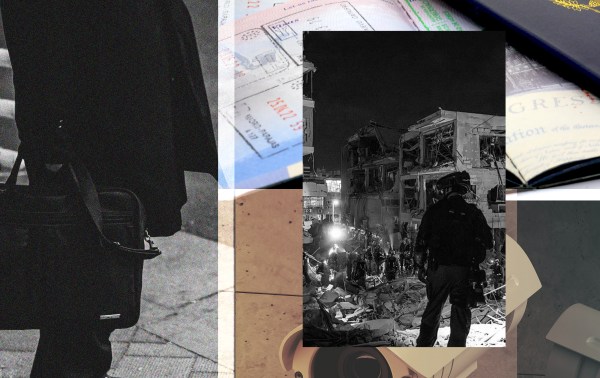Supreme Leader Ali Khamenei has spent more than three decades at the center of Iran’s political, ideological, and military decision-making, but the country could soon move on from the aging leader. Khamenei fell “gravely ill” following a recent surgery for bowel obstruction, The New York Times reported last week, the latest in a long line of reports about his deteriorating health.
Over the weekend Iranian state media circulated images of Khamenei speaking at a mosque in Tehran, but given the 83-year-old’s advanced age and history of prostate cancer, Iran’s political establishment still must be looking to the future.
How will the regime choose its third supreme leader when the time comes?
In theory, the lifetime appointment is indirectly influenced by the Iranian people. The Islamic Republic’s Constitution puts the decision in the hands of the directly elected, 88-member Assembly of Experts. But eligible candidates must first be approved by the Guardian Council, where membership is effectively controlled by the current supreme leader. By exerting control over the Assembly of Expert’s political makeup and narrowing the field of contenders for the supreme leadership, Khamenei has effectively guaranteed the selection of a hardline heir.
“His successor will be one of these handpicked disciples that he has nurtured and taken care of through his tenure as supreme leader,” Jason Brodsky, policy director at United Against Nuclear Iran, said in an interview. “While the Assembly of Experts does constitutionally select the next supreme leader, Khamenei’s wishes are obviously paramount.”
Iranian President Ebrahim Raisi, who took office more than a year ago, is the Khamenei protégé most often discussed for the job. The 61-year-old cleric was “elected” in June 2021: Raisi’s biggest challengers were kept out of the race after rule changes, mass disqualifications, and interference by the supreme leader himself.
First as chief prosecutor of Hamedan and later as deputy prosecutor of Tehran, Raisi took part in the Islamic Republic’s 1980s crackdown on political opponents. Some reports estimate the new government illegally executed more than 30,000 prisoners over the course of five months in 1988. Raisi’s visit to New York City this week was met with protests by Iranian-American activists, who for months have urged the U.S. State Department to deny the leader a visa.
But a record of human-rights violations isn’t disqualifying for the role. The greater risk to his rise comes from growing discontent within the Iranian political establishment. After campaigning on promises to create jobs, eliminate corruption, and lower inflation, Raisi has yet to revitalize Iran’s battered economy.
Iranian presidents tend to leave the job with diminished political sway, as they provide political cover for the supreme leader by implementing policy rather than driving it. The longer Raisi holds the high profile position, the more his chances of eventually assuming the supreme leadership shrink.
That would be a welcome development for Khamenei’s 53-year-old son Mojtaba, a lesser-known but deeply connected member of Tehran’s political elite. Like Raisi, Mojtaba has been sanctioned by the U.S. Treasury Department. The Iran-Iraq war veteran was listed in 2019 for his role as liaison between the supreme leader’s office and the Islamic Revolutionary Guard Corps. But the perception that Mojtaba Khamenei’s takeover would resurrect the monarchical system the Islamic Republic was ostensibly founded to overthrow could undermine his chances.
How long the transition to new leadership takes depends on political infighting and the extent to which Khamenei makes his wishes clear. If he becomes incapacitated or dies before the Assembly of Experts designates a replacement, the constitution states that Iran’s president, chief justice, and a Guardian Council theologian may assume the supreme leader’s roles in the interim. There are no stated limits to how long the temporary body can govern, but the new leader should be chosen in “shortest possible time.”
But in dictatorships, leadership succession is far from a fixed process. Khamenei’s elevation to office in 1989 marked the only time the Assembly of Experts chose a new head of state. As a mid-ranking religious leader at the time, Khamenei defied a constitutional provision requiring the position go to a higher-ranked cleric. He served as acting supreme leader until the rules were amended.
Khamenei’s selection also took place shortly after a falling out between then-Supreme Leader Ruhollah Khomeini and his designated successor and deputy. Grand Ayatollah Hussein-Ali Montazeri sank his bid in part by exposing the crimes of Raisi and other Iranian officials during the massacres of the ’80s. Khamenei, then-president, rose to power after another top official claimed that it had been Khomeini’s dying wish.
Informed by the mistakes of his predecessor, Khamenei has spent his tenure streamlining the succession process to preserve his interests and avoid a constitutional crisis. “The supreme leader, for years now, has basically stage-managed his succession,” Brodsky said. Absent another revolution, “the Iranian people are really left without any say in the matter.”







Please note that we at The Dispatch hold ourselves, our work, and our commenters to a higher standard than other places on the internet. We welcome comments that foster genuine debate or discussion—including comments critical of us or our work—but responses that include ad hominem attacks on fellow Dispatch members or are intended to stoke fear and anger may be moderated.
With your membership, you only have the ability to comment on The Morning Dispatch articles. Consider upgrading to join the conversation everywhere.